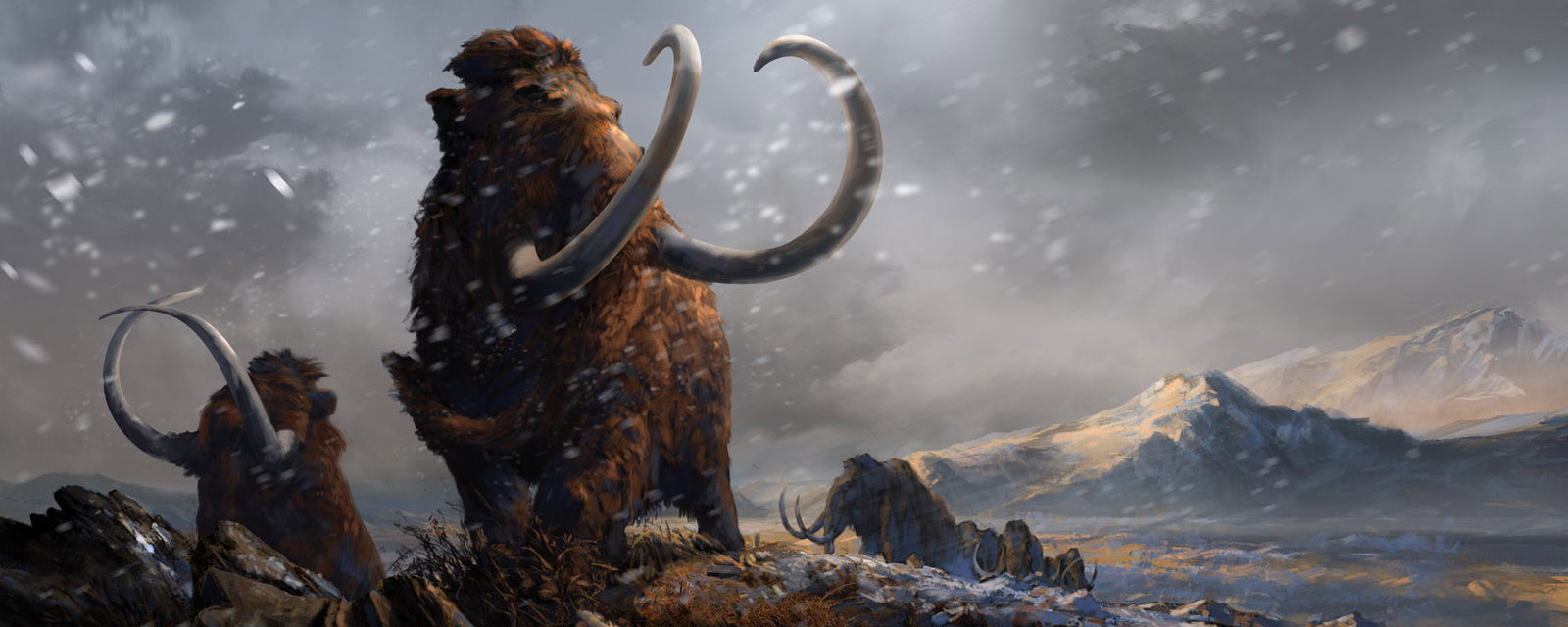

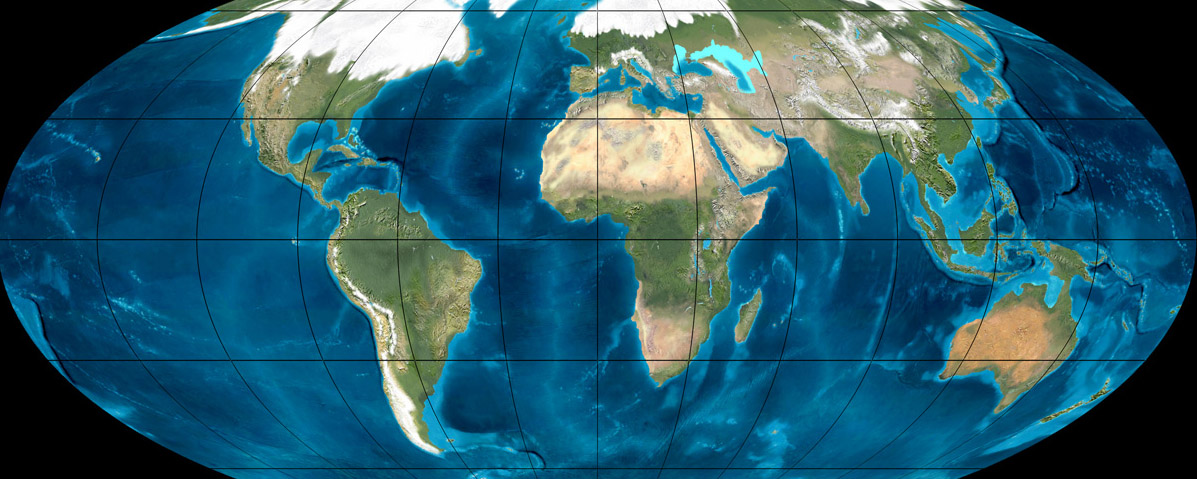
Paleogeography and Geology of the
Quaternary:
Single most important geological phenomenon of the Quaternary: the Quaternary Ice Ages (sometimes called the "Pleistocene Ice Ages" (even though the Holocene is part of the ordinary cyclity, too) or "late Neogene Ice Ages" (back when the Neogene extended to the present...)
Possible causes/contributing factors:
Climate dries in general throughout late Cenozoic.
Late Neogene Ice Ages once thought to be a series of four advances and four retreats; now known to be very complex set of advances and retreats of varying magnitudes:
Glacial-Interglacial cycles seem to be controlled by orbital parameters of the Earth (the Milankovtich Cycle).
This cycle is (in principle) still ongoing. The end of the Last Glacial Maximum (at around 11.8 ka), which marks the beginning of the Holocene, is not the last glacial advance. During the Holocene there have been several more smaller fluctuations (Medieval Warm Period, Little Ice Age, etc.). In a sense, the Holocene is not a distinct Epoch, but only the latest major interglacial.
Animation of the global deglaciation from the LGM to the present and into the near future.
The GSSP for the Holocene officially begins with a climate shift marked in the NGRIP2 Greenland ice core (and seen many other places). It is dated to approximately 11,784 yr b2k (Before 2000 CE; unlike radiocarbon dates -- in which the "present" is defined as 1950, the new ice core dates are relative to 2000 AD/CE), with a plus/minus 50 yr uncertainty. Thus, the Holocene begins at something close to 9700 BCE.
Terrestrial Life of the Quaternary
With the rise of continental glaciation in the Northern Hemisphere during the Pleistocene: rise of tundra biome. Throughout Pleistocene tundra region was more productive, and different (more diverse) plant and animal diversity, than today: the mammoth steppe:
In Africa, diversification of the homininans includes the rise of the big-brained genus Homo. With species that have essentially modern below the neck, we reach forms adapted as long-distance endurance running. It is Homo that leaves Africa, but is not the only animal to do so. At this time the rifting between the Arabian and African plates was incomplete, and there was still land connection between the Red Sea and the Gulf of Aden. Additionally, the world was wetter, so that instead of a Sahara and Arabian desert, this region was a relatively-continuous "savannahstan" connecting the African savannas and the steppes of Eurasia. Not just homininans but other African mammals moved into Eurasia at during this interval. Pre-sapiens species spread throughout Europe and Asia, reaching as far as Indonesia.
Our own species Homo sapiens first appears in Africa around 200 ka. By around 130 ka on branch leaves Africa to spread out along the southern coast of Asia; a later migration spreads to northern Asia, Europe, and Australia (reaching these regions around 45 ka). In Asia and Europe they encounter other species of Homo (such as western Eurasian Homo neanderthalensis). Populations of H. sapiens finally arrive in the Americas south the ice around 15 ka.
At Around 50 ka Homo sapiens show behavioral shifts which include:
As humanity spread around the world, extinction of large-bodied mammals, birds, and large non-avian sauropsids (mostly lizards and turtles) occur: the Pleistocene Megafaunal Extinction. This is definitely NOT a "mass extinction" in the traditional sense: it did not touch the marine invertebrate community, and barely affected small-bodied or freshwater animals on the continents. Although climate changes may have contributed to this (in that population ranges would expand and contract with glacial-interglacial cycles, and while in a contracted or fragmented state the populations would be vulnerable), these extinctions were not CAUSED by climate. The timing is different in different parts of the world (not what you would expect with climate change), and the various species which died out in the Pleistocene megafaunal extinction all had lived through comparably-extreme events earlier in the Pleistocene. Instead, EVERY megafaunal extinction event occurred after humans arrived at that region, and the intensity always is more severe in regions (Australia, the New World) where humans had never been before, intermediate in regions (Europe, Asia) where Homo but not H. sapiens had already lived, and weakest in Africa, where all the animals had been co-evolving with the human lineage.Some of the animals that died were directly hunted; others were predators dependent on those prey items. The survivors tended to be animals that had faster-than-expected reproductive rates (like bison) or had broad diets allowing them to feed on prey of many sizes (like cougars).
The Neolithic (Agricultural) and Industrial Revolutions
On the geologic timescale it is hard to imagine that humans would have much effect on the planetary situation. However, the evidence is strong (we'll get to the specifics later) that the combination of agriculture (the Neolithic Revolution) and technology (and in particular the Industrial Revolution) allowed us to be a force to be reckoned with.
Agriculture spread out from the Fertile Crescent to other parts of the Old World, and was independently developed in several other regions. Agriculture has two major consequences for Earth climate systems:
With more and more parts of the Earth converted into regions to fuel more and more humans, the population of our species has greatly increased:
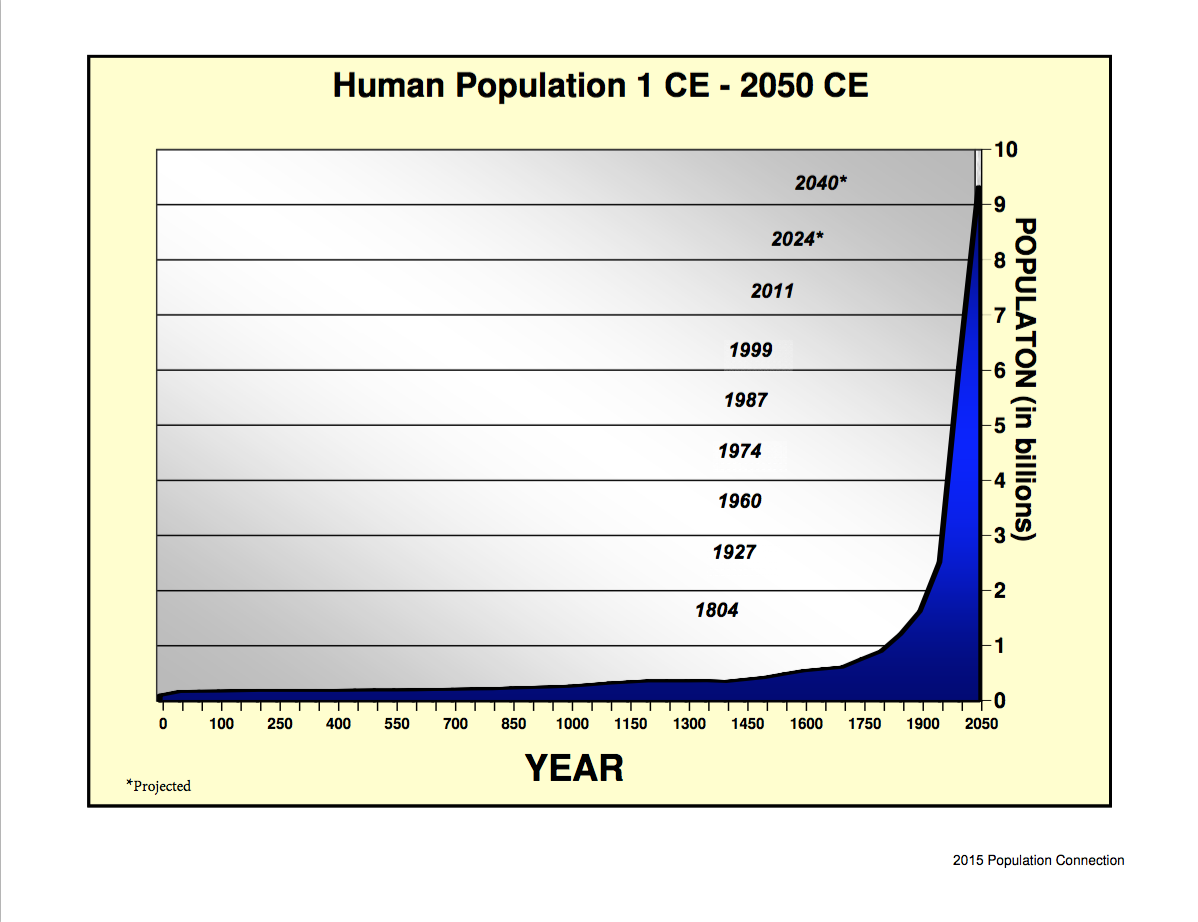
(World population is at 8.1 billion in January 2024)
Our direct use of wild foods has greatly decreased, at least as regards to terrestrial animals (except for game, which is limited generally to the wilderness of the developing world and sports hunters in the developed world) and plants and fungi. Fishing, however, still has a large wild-based component.
Most of our food now comes from farming. As such, it uses a substantial fraction of the planet's surface. Large scale farming to support the cities of the world necessarily requires industrial farming equipment and chemical fertilizers (in order to allow a small fraction of the population to feed the rest).
Farming allowed for a tremendous increase in population, and allows us to capture progressively more and more of the planetary biomass to feed our species. Additionally, much of energy consumption has to do with growing and transporting food stuffs.
One of the most important nutrients that farming exhausts from the soil is nitrogen. While in older societies natural sources of nitrogen were used (guano from bats and birds; sal ammoniac; etc.), the Haber-Bosch process (developed in 1908) allows us to artificially generate ammonia. Via the Haber-Bosch process, humans generate about 100 Tg of nitrogen per year for agricultural use, increasing yields such that where one acre used to support 1.9 people it now supports 4.3.
Supported by the products of farming, agricultural societies could afford to have specialists in metallurgy, pottery, and eventually more advanced forms of engineering. By the late 1700s and early 1800s C.E. Scottish engineers were uniting steam engines fueled by coal with steel-framed machines, leading to the Industrial Revolution. With coal-buring steam power (eventually assisted by petroleum- and methane-fueled internal combustion engines) it became far easier to farm; to transport huge amounts of material; to dig up and build on tracts of land; etc.)
However, such large-scale operations of fuel burning releases copious amounts of greenhouse gasses (about 38.5 Gt CO2 in 2022) into the atmosphere, among many other changes. The scale at which humans now release greenhouse gasses, fix nitrogen, produce erosion, consume nutrients, produce runoff, and so forth is on a scale with planetary geological forces:
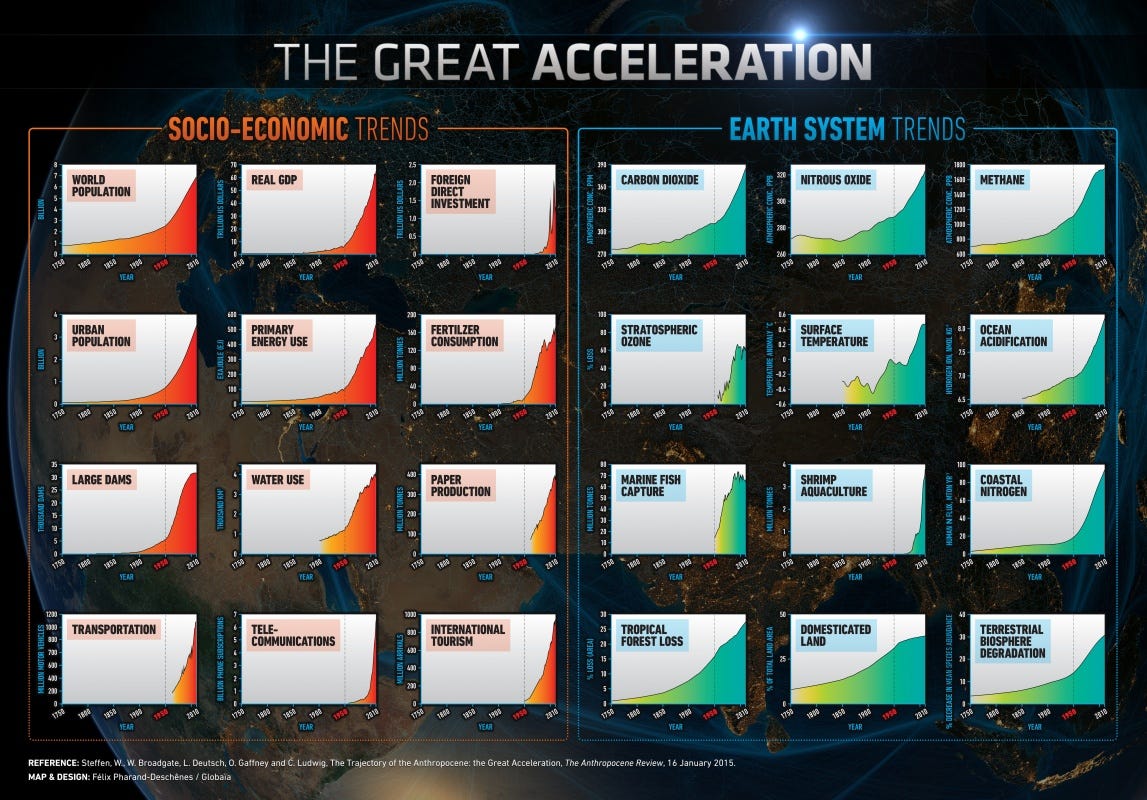
Some researchers have suggested that we have now entered the Anthropocene Epoch: a new phase of geologic time in which humans represent a geologic force. I personally disagree with using this term as a geologic time period: we have a perfectly good term (Holocene Epoch) for the last 11.8 ka, and when we get into shorter term time units we actually have good calendar systems and such! Additionally, the current situation is not sustainable at anything like geological time scales, and so the "Anthropocene"
represents an event (like the Paleocene-Eocene Thermal Maximum or the Permo-Triassic Extinction) rather than a period. Furthermore, it isn't entirely certain if the Anthropocene should be started with the Industrial Revolution (as typically used) or if (as William Ruddiman of the University of Virginia argues) methane and carbon dioxide produced by early agriculturalists had a slow but steady contribution, and thus it began with the Neolithic Revolution:
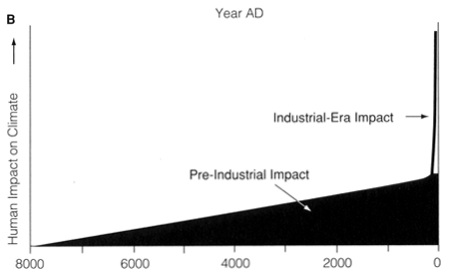
We aren't going to quibble over this here. Regardless of when and to what degree it began, we do live in a world in which human activity is one of the primary drivers of climate and change. We are definitely in the Anthropocene; it is now our job to understand what that means.
To Lecture Notes.
